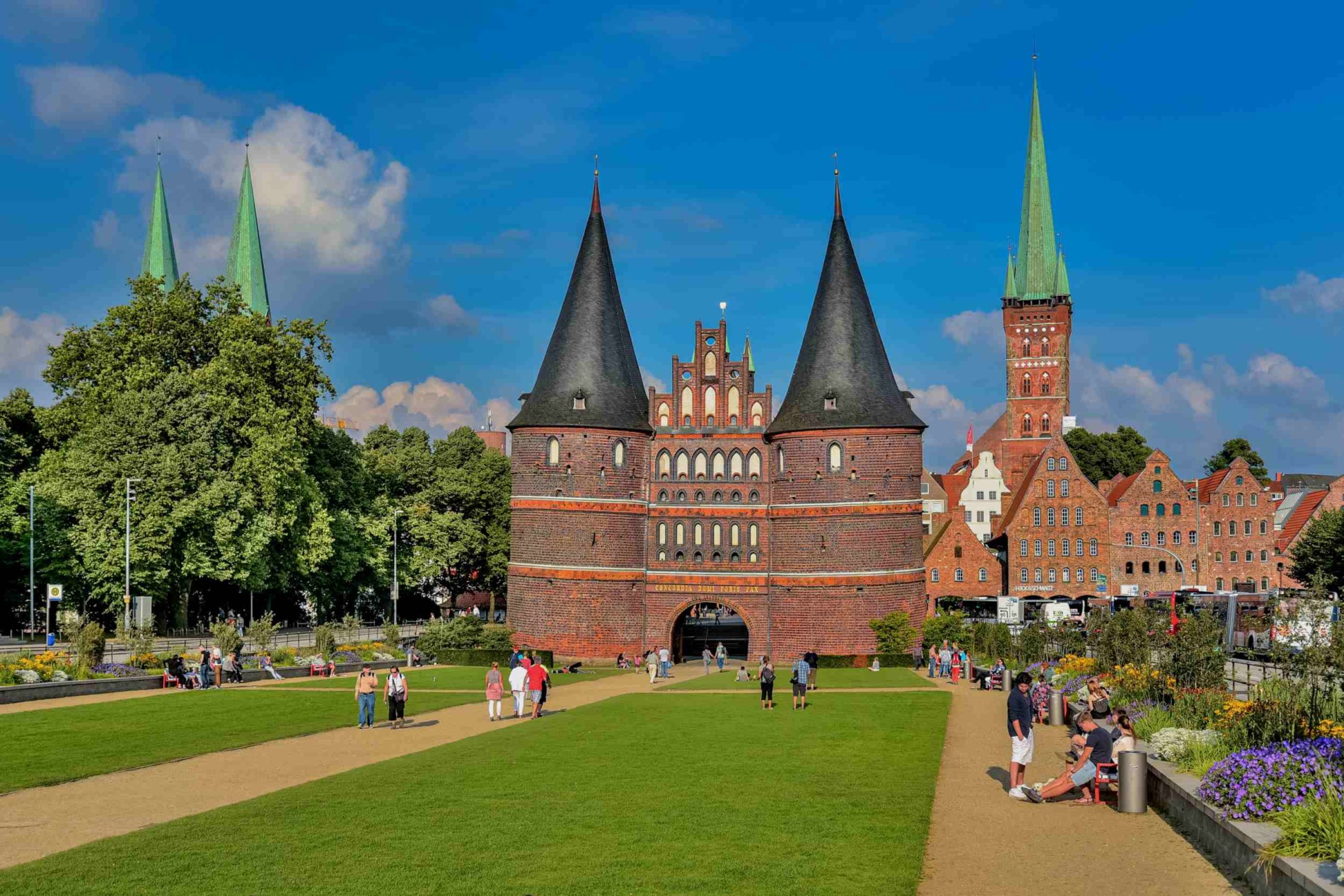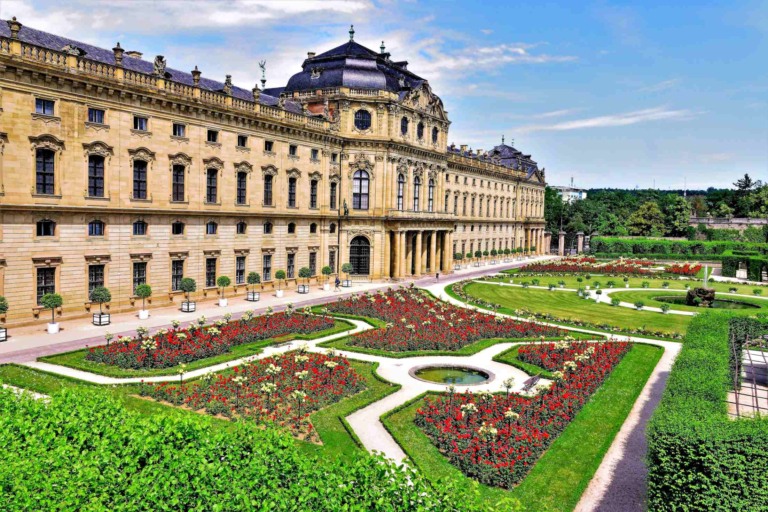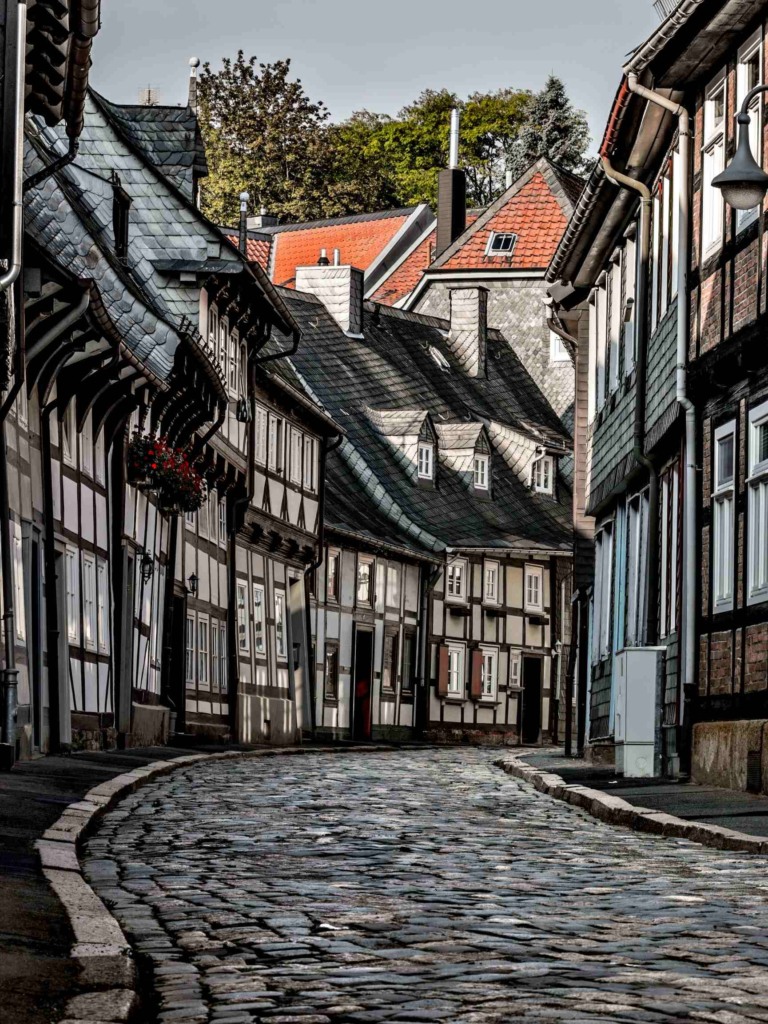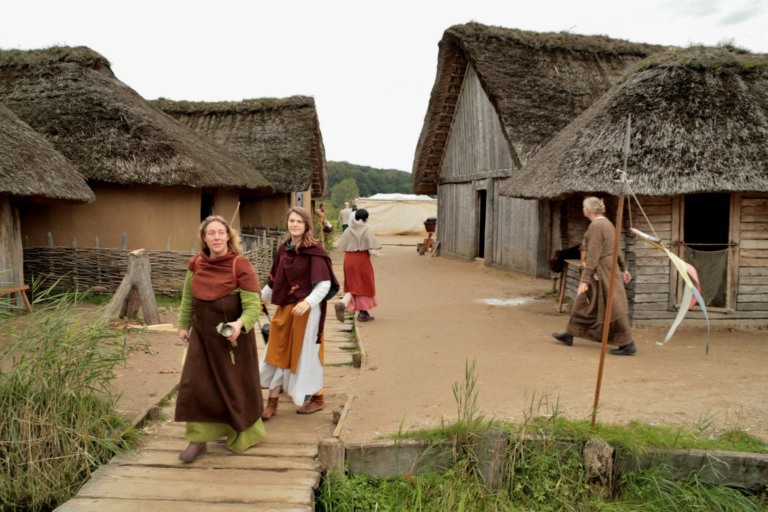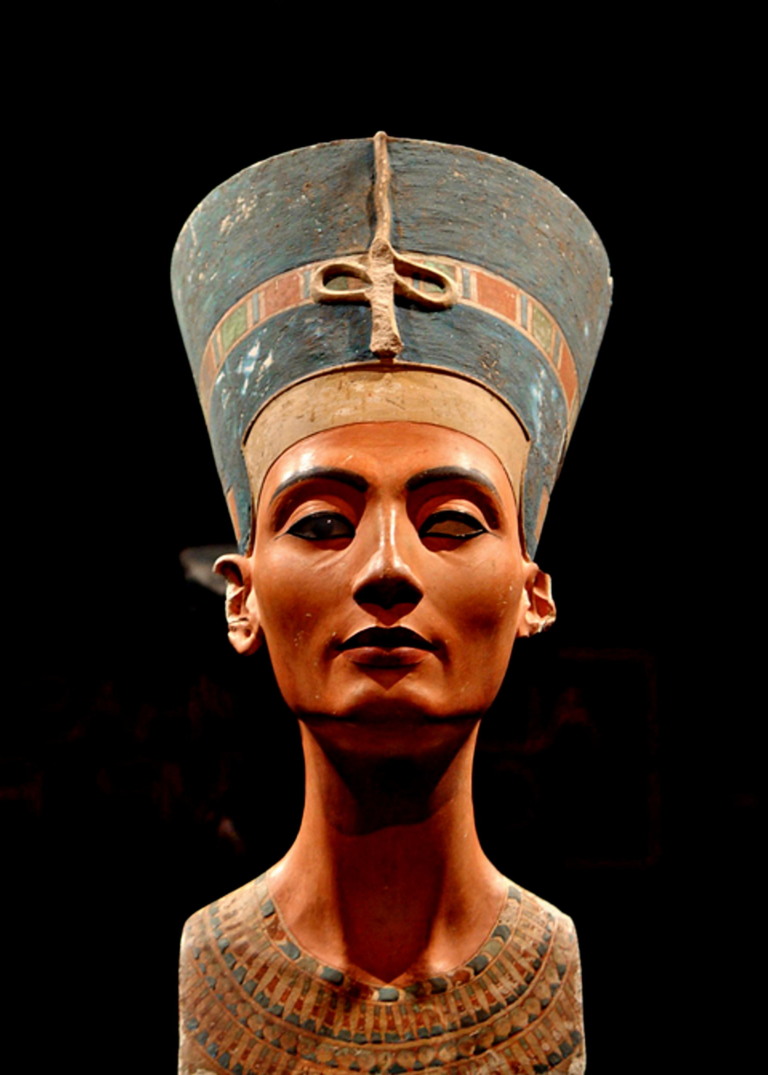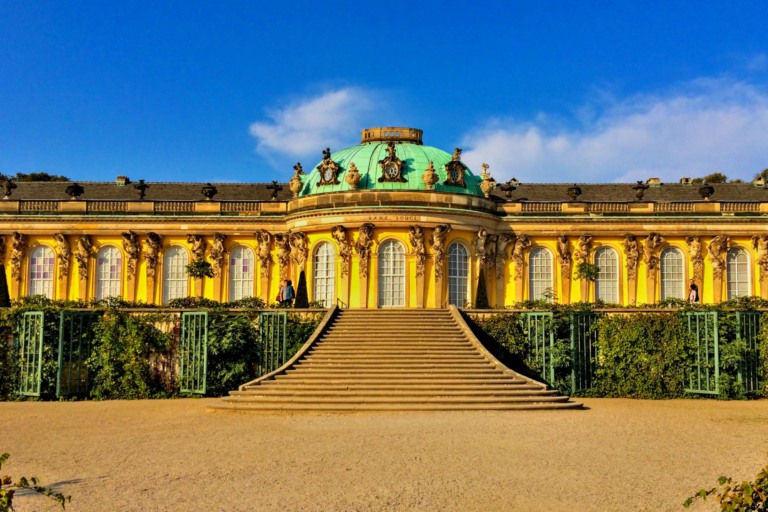Lubeck was the capital and queen city of the Hanseatic League. It was formed in the 12th century and was the most important trading center in northern Europe until the 16th century. Even now, it is still a hub for marine trade, especially with the Nordic countries. Even though it was damaged during World War II, the old city, which is mostly made up of 15th- and 16th-century patrician homes and public symbols like the famous Holstentor brick gate, churches, and salt storehouses, has not changed much.
Lubeck in Germany
Lübeck, also known as the Hanseatic City of Lübeck, is a German metropolis in the north. The city is in Holstein, northeast of Hamburg. It is on the mouth of the River Trave, which runs into the Bay of Lübeck in the borough of Travemünde, and on the Trave’s tributary, the Wakenitz. The city is in the Hamburg Metropolitan Region and is the most southwestern city on the Baltic. It is also the closest city to Hamburg, from which you can get to the Baltic.
After the port of Rostock, the port of Lübeck is the second-biggest German Baltic port. The city is in the Low German area of Northern Low Saxon. Lübeck is known for being where the Hanseatic League started and for being the real home of the league. The Hanseatic City of Lübeck has been a UNESCO World Heritage Site since 1987 and has the largest urban core in all of Germany.
History of Lubeck Germany
The Holsten Gate is the city’s symbol, but the seven towers of Lübeck’s five largest churches—St. Mary’s, Lübeck Cathedral, St. Jacob’s (Jakobikirche Lübeck), St. Peter’s (Petrikirche Lübeck), and St. Giles’—are what you see when you look up. After the last Ice Age finished around 9700 BCE, people moved into the area where Lübeck is now. There are several dolmens from the Neolithic period in the area.
Around the year 700, Slavic people began to move into the eastern parts of Holstein, which had been inhabited by Germanic people before the Migration Period. Charlemagne tried to bring Christianity to the area, but the Germanic Saxons were against it. So he got rid of a lot of the Saxons and brought in Polabian Slavs as friends. The town of Liubice, whose name means “lovely,” was built on the banks of the River Trave, about 4 km (2.5 mi) north of Lübeck’s current city center.
In the 10th century, it became the most important town in the Obotrite confederacy, and a castle was built there. Rani, a heathen from Rügen, burned down Liubice in the year 1128. The Rani, or Rujani, were a West Slavic group that lived on the island of Rugia (Rügen) and the southwestern part of the mainland across the Strelasund in what is now northeastern Germany.
Adolf II, Count of Schauenburg and Holstein, started a German settlement on the river island of Bucu in 1143. This is where the modern town is now. He built a new castle, which historian Helmold wrote about for the first time in 1147. In 1158, Adolf had to give the castle to Henry the Lion, who was the Duke of Saxony. In 1181, when Henry lost his power, the town became a royal city and stayed that way for eight years.
What is the Hanseatic League
Emperor Barbarossa, who was in charge from 1152 to 1190, said that the city should be run by a council of 20 people. Since traders made up most of the council, trade interests shaped Lübeck’s politics for hundreds of years. The board was still around in the 1800s. The town and castle changed hands for a while after that. They were part of the Duchy of Saxony until 1192, the County of Holstein until 1217, and the Kingdom of Denmark until the Battle of Bornhoved in 1227.
Around 1200, the port became the main place where settlers went to the Baltic lands that the Livonian Order and then the Teutonic Order had taken over. In 1226, Emperor Frederick II made the town a free city of the empire. This made it the Free City of Lübeck. In the 14th century, Lübeck became known as the Queen of the Hanseatic League because it was by far the biggest and most powerful member of that group.
In 1375, Emperor Charles IV named Lübeck one of the five “Glories of the Empire.” Venice, Rome, Pisa, and Florence were the other four. There were several fights between Lübeck, the Hanseatic League, Denmark, and Norway over trade rights, with different results. In 1435 and 1512, Lübeck and the Hanseatic League won their battles. However, Lübeck lost the Count’s Feud, a civil war in Denmark that lasted from 1534 to 1536. In the middle of the 1600s, Lübeck also joined the pro-Lutheran Schmalkaldic League.
Decline of the Hanseatic City
Lübeck’s power slowly went down after it lost the Count’s Feud. During the Thirty Years’ War, which lasted from 1618 to 1648, the city stayed neutral. However, the damage from the war and the shift in European trade toward the Atlantic Ocean made the Hanseatic League and Lübeck less important. But even after the Hanseatic League was “de facto” broken up in 1669, Lübeck remained an important Baltic Sea trade town.
WW II: During World War II (1939–1945), the Royal Air Force (RAF) bombed Lübeck more than any other German city. The attack on March 28, 1942, started a blaze that hurt the historic center a lot. This attack damaged three of the main churches and a lot of the built-up area. The bells of St. Marienkircke fell to the stone floor.
On August 25, 1944, 110 people died when bombs hit the industrial part of Lübeck. Nearly 20% of the city center was completely destroyed. The Gründungsviertel, where rich traders from the Hanseatic League used to live, was hit the hardest. On May 2, 1945, the British Second Army moved into Lübeck without any opposition.
Tourism in Lübeck
In 2019, 2 million people stayed the night in Lübeck. The ancient city center of Lübeck is known for its churches, Holstentor, and small streets. Because it has seven tall church towers, Lübeck has been called “Die Stadt der 7 Türme,” or “the city of seven towers.” Like many other places in Germany, Lübeck has a long history of having a Christmas market in December.
The famous handicraft market is held inside the Heiligen-Geist-Hospital, which is at the northern end of Konigstrasse. A lot of the old town still looks like it did in the Middle Ages, with old houses and narrow streets. At one time, you could only get into the town through one of the four gates. Two of those gates still stand today: the famous Holstentor (built in 1478) and the Burgtor (built in 1444).
